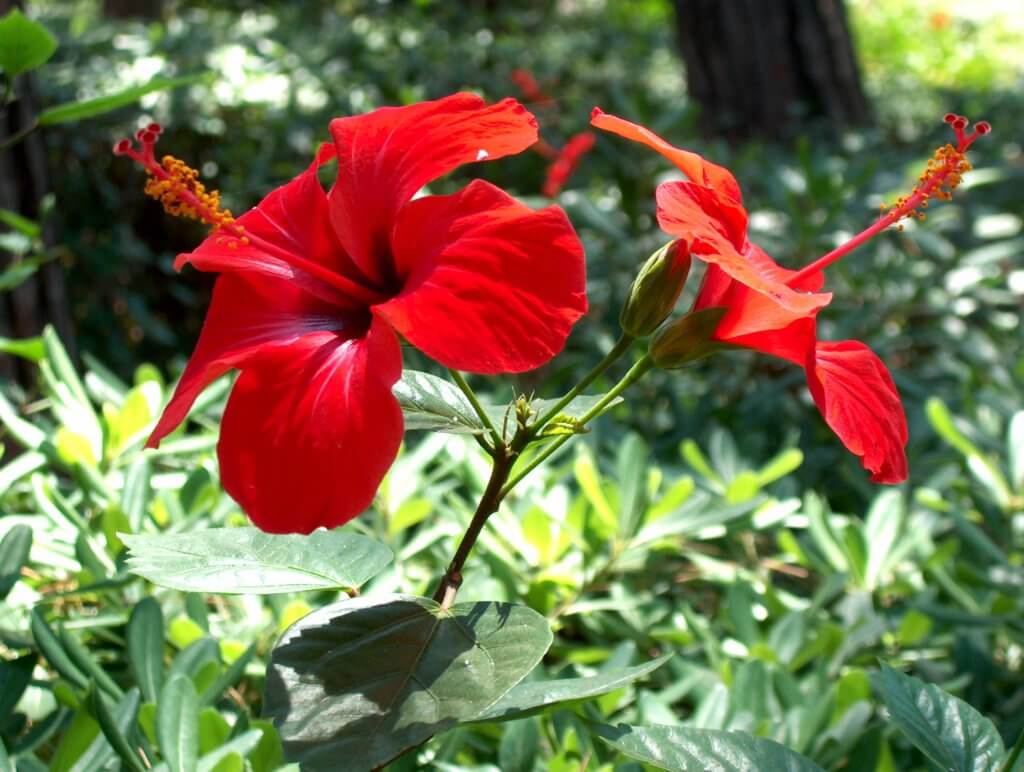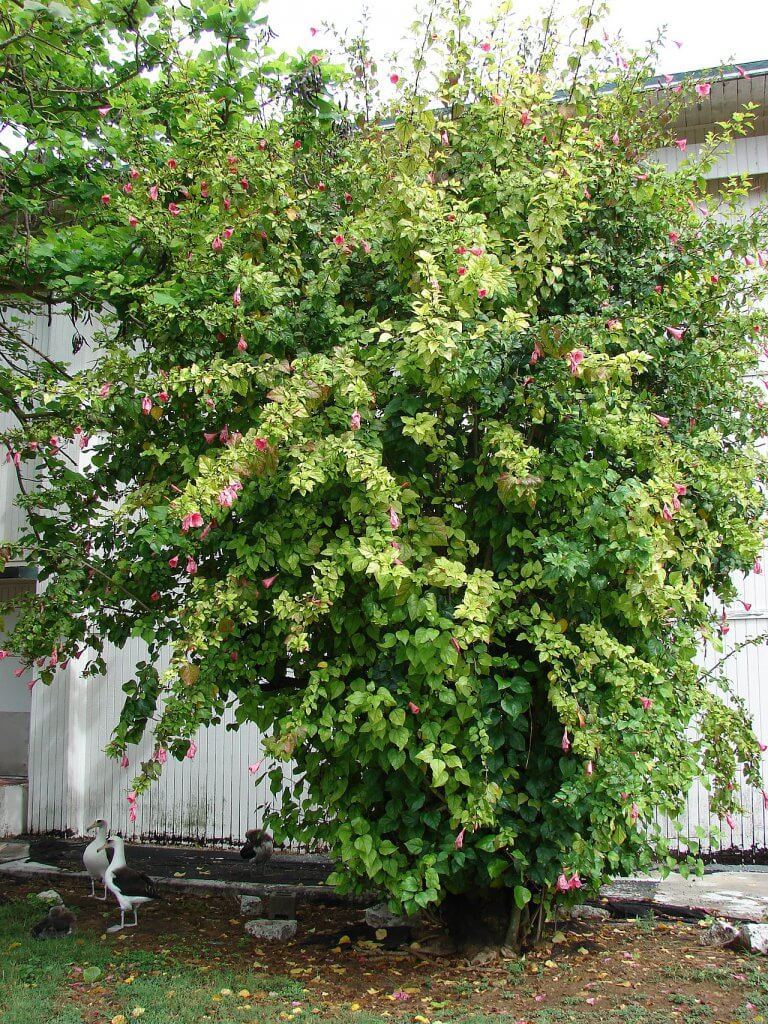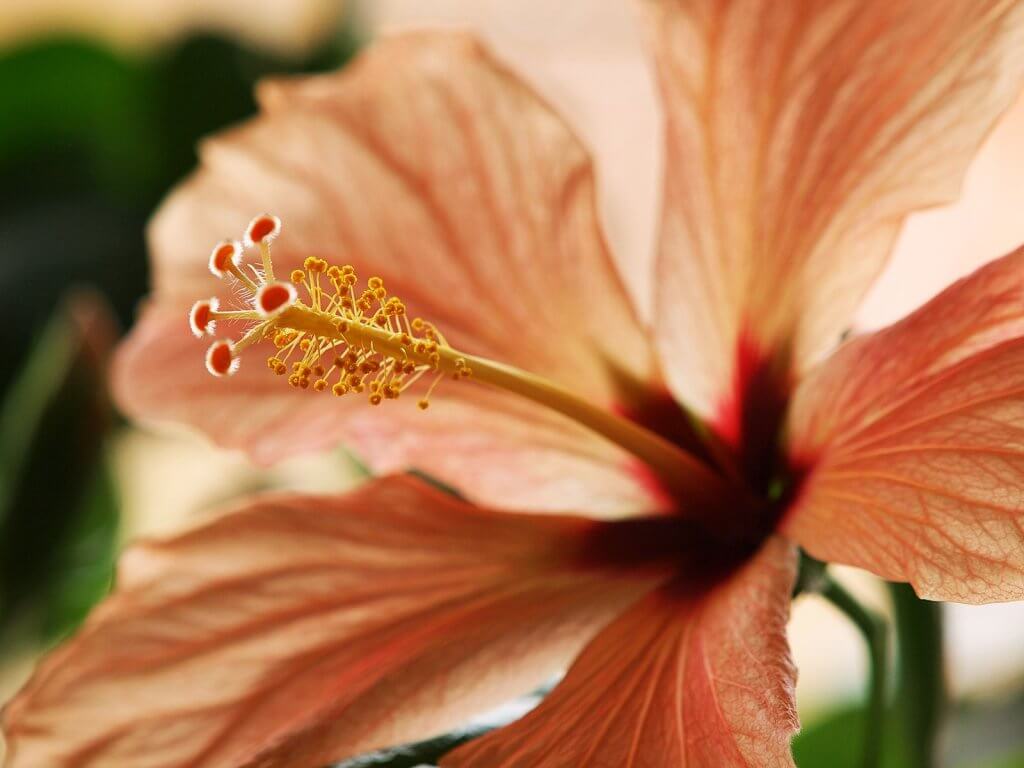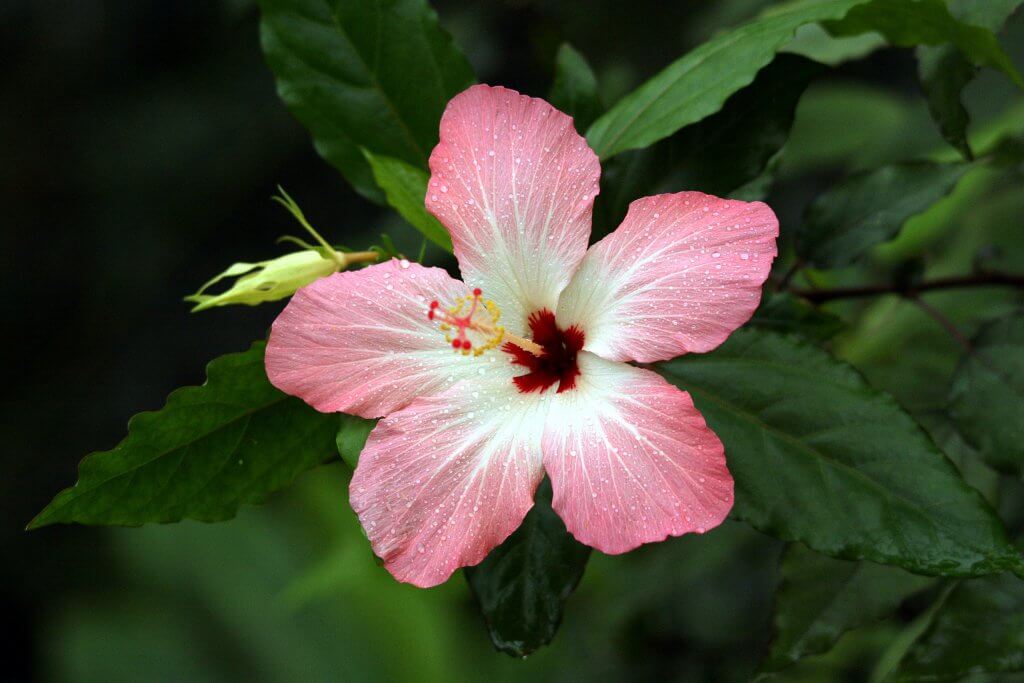Hibiscus (Hibiscus rosa-sinensis) are a group of flowering plants native to temperate and tropical regions. You will find them growing in many countries including, Mexico, Malaysia, Hawaii and the Caribbean. Other names that you may know hibiscus by, include rose mallow, rose of Sharon, Hawaiian hibiscus and China rose. You will find them growing within a diverse range of habitats, from wetlands to open grassland.
The most distinguishable feature of hibiscus is the showy flowers that bloom in a range of colors, from deep pinks to purples and yellows. The large, trumpet shaped flowers are usually between 5 and 20cm in size, with 5 distinct petals. You will typically find hibiscus shrubs growing to around 3 to 5 meters. It also tends to extend to a width of around 2 meters. The leaves are deep green, glossy and lightly serrated in some species.

Cultivation and History of Hibiscus
All hibiscus species will grow best within full sunlight, and well drained soil with a slightly acidic pH. You will see them grown primarily as ornamental shrubs, however many countries grow hibiscus for its culinary and cultural uses.

Grow hibiscus from cuttings, seed or by purchasing a young plant from your local garden center. Soak the seeds in water overnight then sow indoors during the winter, or 10 weeks before the last frost of spring. After sowing, you will start to see seedlings after roughly 2 weeks. Ensure the seedlings receive plenty of sunlight as they mature. Place young plants in the garden after strong roots have formed. If you grow seeds within a small container, consider moving them into a bigger pot before planting to allow more space for roots to establish.
For your hibiscus to thrive and produce many flowers, keep it watered during dry weather and mulch generously. It is possible to grow them within cooler and temperate climates. However you may need to bring the plant inside in winter as hibiscus does not fair well in frost. Regular pruning will also help to keep your hibiscus healthy. This will stop flower bearing stems and branches becoming too leggy.
Toxicity
You can safely eat hibiscus within reasonable amounts in food and herbal remedies. If you are pregnant or breast feeding, diabetic or suffer from low blood pressure, you should avoid taking hibiscus. Its full effects on the body are not throughly studied, and minor evidence suggests it could alter blood pressure.
Uses
Culinary uses of Hibiscus
Hibiscus tea is a very popular drink worldwide and can be served hot or cold. It has a high amount of Vitamin C and is drank as a refreshing and nutritious beverage. Try infusing the dried flowers with hot water and adding lime, honey and ice cubes for a refreshing drink. You may see this particular concoction on the menu of many Cambodian restaurants and bars.
The dried flowers of hibiscus are edible and you can add them to a variety of dishes to add color or texture. You may choose to use them as a decorative garnish for desserts or to add a splash of color to a salad.

Products created with Hibiscus
Within areas of China and India hibiscus is often used as a shoe polish. The flowers can be rubbed directly onto the shoe or a black polish can be produced from crushed petals. Some short run production of paper types are created with hibiscus
Medicinal uses of Hibiscus
Indian Ayurveda and Chinese traditional medicines have frequently used hibiscus within remedies. Records show that hibiscus tea could have been used by ancient Egyptians to reduce body temperature and treat certain diseases. Within some African cultures, hibiscus tea was thought to cure constipation, liver disease and the common cold. A poultice was also made with the leaves and applied directly to wounds and inflamed skin. Notably, many individuals from Iran still use hibiscus tea to lower blood pressure, which recent studies have began to find supporting evidence for.
Did you know…
Hibiscus flowers are a widely used symbol of cultural significance. Within India the hibiscus flower is used as an offering to worship the Hindu Goddess Kali. This ritual is called ‘Puja’, and flowers are a very popular offering. The plant is the national symbol of many tropical islands including Haiti, Niue and the Solomon Islands.

Conclusion
Hibiscus plants are an extremely beautiful addition to a tropical garden. If you live within a cooler climate your hibiscus may be suited to life indoors. However they can be placed outside within a container during the summer. This is because they cannot survive well in temperatures of 59ºF (12ºC) and lower. Use the ornate flowers to create your own herbal teas or create a beautiful garnish on a tropical, layered cake or lime cheesecake.
—————Written by Hannah Sweet
Hannah is a freelance writer and graphic designer from the UK. With a penchant for travelling, photography and all things botanical, she enjoys writing about a wealth of topics and issues, from conservation and slow living, to design and travel. Learn more about her writing and design services at www.sweetmeanders.co
Many of our readers find that subscribing to Eat The Planet is the best way to make sure they don't miss any of our valuable information about wild edibles.
See our privacy policy for more information about ads on this site






